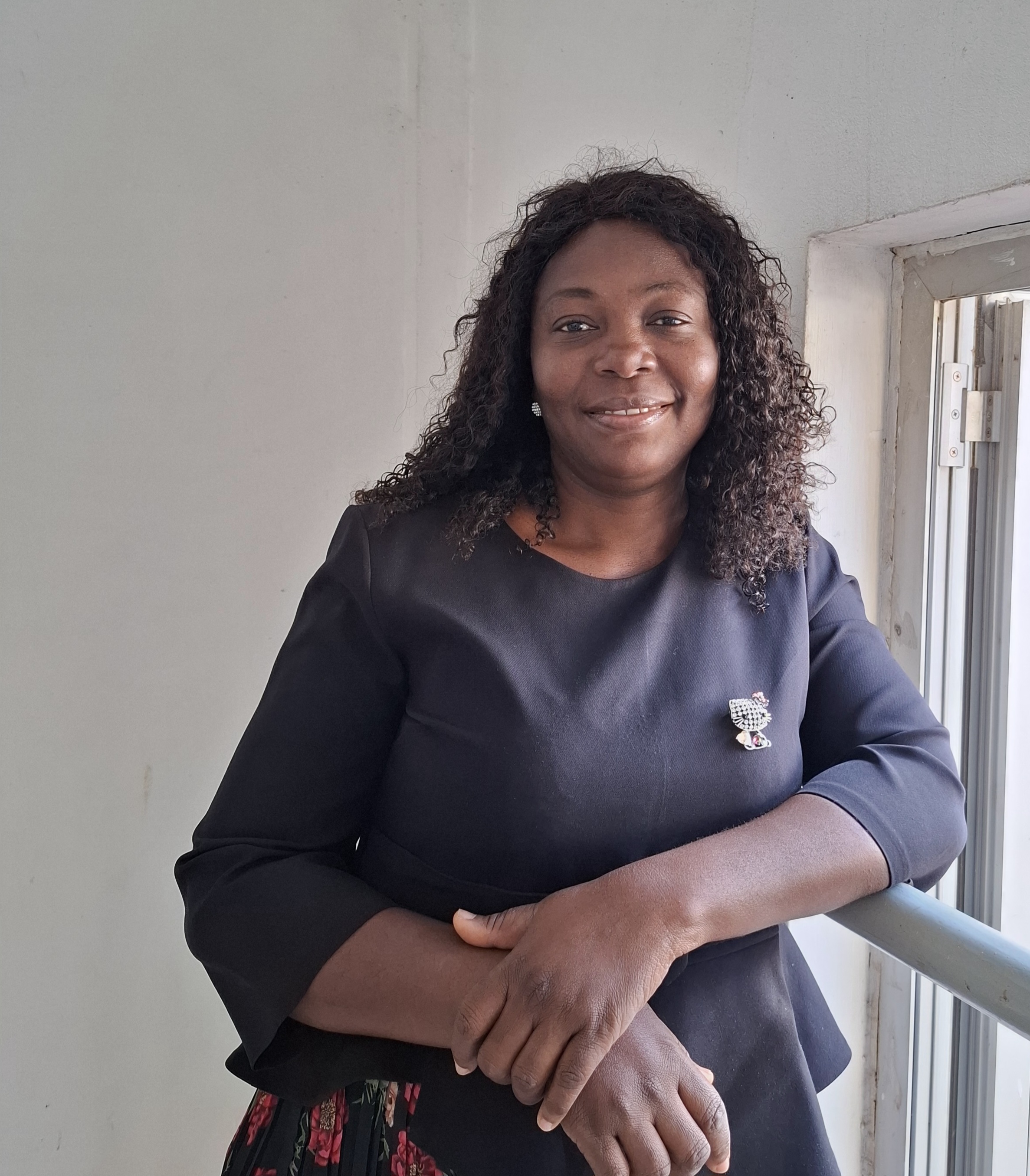Research Article
Assessment of the Impact of Community-Based Obesity Prevention Programs in Ogun State, Southwest Nigeria
- Oluwaseun Remilekun Omole *
Department of Nursing Science, Coventry University, England, United Kingdom.
*Corresponding Author: Oluwaseun Remilekun Omole, Department of Nursing Science, Coventry University, England, United Kingdom.
Citation: Oluwaseun R. Omole. (2025). Assessment of the Impact of Community-Based Obesity Prevention Programs in Ogun State, Southwest Nigeria, International Journal of Biomedical and Clinical Research, BioRes Scientia Publishers. 3(4):1-7. DOI: 10.59657/2997-6103.brs.25.058
Copyright: © 2025 Oluwaseun Remilekun Omole, this is an open-access article distributed under the terms of the Creative Commons Attribution License, which permits unrestricted use, distribution, and reproduction in any medium, provided the original author and source are credited.
Received: February 10, 2025 | Accepted: February 28, 2025 | Published: March 07, 2025
Abstract
Background: Obesity is a growing public health concern in Nigeria, with significant health and economic implications. Community-based obesity prevention programs have been implemented to curb its prevalence, but their effectiveness remains understudied. This study assesses the impact of these programs in Ogun State, Nigeria.
Materials and Methods: A cross-sectional quasi-experimental design with pre-test and post-test evaluations was employed. The study was conducted in three purposively selected Local Government Areas (LGAs) in Ogun State, encompassing urban, semi-urban, and rural settlements. Within each LGA, two communities were randomly selected. A multistage sampling technique was used to select 180 participants (adolescents and adults aged 10 years and above). Data collection involved a structured questionnaire adapted from the Global Physical Activity Questionnaire (GPAQ) and WHO STEPS instrument, as well as anthropometric measurements. Descriptive statistics, chi-square tests, and multivariate regression analysis were used for data analysis.
Results: Findings revealed that 66.7% of participants had heard of community-based obesity prevention programs, while 50% had participated. Physical activity levels were generally low, with 44.4% of respondents not engaging in vigorous-intensity activity. Fruit consumption was also suboptimal, with 16.7% rarely or never consuming fruits. Anthropometric analysis showed significant gender differences in BMI, waist circumference, and waist-hip ratio (p < 0.05). Correlation analysis indicated a negative association between BMI and physical activity (r = -0.35, p = 0.002), as well as fruit consumption (r = -0.40, p = 0.001). Chi-square analysis demonstrated significant associations between gender and program participation (p = 0.012), education and awareness (p = 0.007), and marital status and obesity (p = 0.015).
Conclusion: Community-based obesity prevention programs play a crucial role in promoting awareness and healthier behaviors. However, participation rates remain low, necessitating enhanced community engagement strategies. Increased advocacy, policy support, and program sustainability are recommended to improve obesity prevention efforts in Ogun State.
Keywords: obesity prevention; community-based intervention; physical activity; dietary habits; public health; anthropometric indices
Introduction
Obesity has emerged as a significant public health concern globally, with its prevalence nearly tripling between 1975 and 2016. In 2019, an estimated 38.2 million children under the age of 5 were either obese or overweight. In Africa, the prevalence of childhood obesity and overweight was 8.5% in 2010, with projections reaching 12.7% by 2020 [1]. Nigeria is not exempt from this trend; the National Bureau of Statistics reported a national prevalence of 1.6% for child obesity in 2015, cautioning that this figure could rise without preventive measures [2].
The health implications of obesity are profound, encompassing both physical and psychological dimensions. Physically, obesity is associated with an increased risk of early-onset diabetes, hypertension, heart disease, and arthritis. Psychologically, individuals with obesity may experience stigmatization, bullying, and mental health challenges, particularly in school settings, which can lead to severe consequences [2].
In response to the escalating obesity rates, community-based interventions have been recognized as effective strategies for prevention and management. These programs leverage local resources and cultural contexts to promote healthy behaviors, such as improved nutrition and increased physical activity. Community-based approaches are particularly advantageous as they can be tailored to address specific local needs and foster community engagement, thereby enhancing the sustainability of health outcomes [3].
In Nigeria, various community-based initiatives have been implemented to combat obesity. For instance, the Childhood/Adolescent Obesity Prevention Programme (CHOPP) was launched in Abuja to address the rising prevalence of childhood obesity. This program focuses on educating children and adolescents about healthy eating habits and the importance of regular physical activity [2].
Ogun State, located in South-Western Nigeria, has also been the focus of health-related studies. A community-based diabetes risk assessment conducted in Ogun State highlighted the importance of local interventions in managing non-communicable diseases. The study utilized the Finnish Medical Association diabetes risk score across 25 communities, emphasizing the role of community engagement in health assessments and interventions [4].
Despite these efforts, there is a paucity of data specifically evaluating the impact of community-based obesity prevention programs in Ogun State. Understanding the effectiveness of such programs is crucial for informing policy decisions and optimizing resource allocation. This study aims to assess the impact of community-based obesity prevention programs in Ogun State, Nigeria, thereby contributing to the body of knowledge necessary for developing targeted interventions to curb the obesity epidemic in the region.
Materials and Methods
Study Design
The study employed a cross-sectional quasi-experimental design with a pre-test and post-test evaluation of community-based obesity prevention programs implemented in selected communities across the state.
Study Area
This study was conducted in Ogun State, Nigeria, a southwest Nigerian state comprising urban, semi-urban, and rural settlements. Ogun State has a diverse population and varying socio-economic conditions, making it a suitable location for assessing community-based obesity prevention programs.
Study Population and Sampling
The study population included adults and adolescents (aged 10 years and above) residing in communities where obesity prevention programs have been implemented. A multistage sampling technique was used:
- Selection of Local Government Areas (LGAs): Three LGAs were purposively selected based on the presence of ongoing or previously implemented community-based obesity prevention programs.
- Community Selection: Within each LGA, two communities were randomly selected.
- Participant Selection: Households were systematically sampled, and eligible individuals were selected through simple random sampling. A total of 180 participants were recruited for the study.
Data Collection Methods
A structured questionnaire was used to collect data on participants’ socio-demographic characteristics, dietary habits, physical activity levels, and obesity-related knowledge and behaviors. The questionnaire was adapted from validated tools such as the Global Physical Activity Questionnaire (GPAQ) and the WHO STEPS instrument.
Determination of Anthropometric Indices
The body mass index for each participant was calculated from weight and height measurements obtained through the use of Hanson’s weighing scale (capacity of 120 kg) and a meter rule attached to a wooden pole, respectively. The participants were weighed in light clothing and reading was taken to the nearest 0.1 kg. Height to the nearest 0.1 cm was measured with the participants standing erect on a flat surface. Having a BMI of ≥30 Kg/m2 was taken as general obesity. Waist circumference was measured with a flexible non-stretch tape placed on the midpoint between the top of the iliac crest and the bottom of the rib cage where the last palpable rib is found. Values ≥94 cm for males and ≥ 80 cm for females were used to determine the prevalence of abdominal adiposity [5]. The weighing scale was maintained at zero before taking the weight measurements.
Data Analysis
Descriptive statistics (frequencies and percentages) were used to summarize the data. Paired t-tests and chi-square tests were used to compare pre-and post-intervention data. Multivariate regression analysis was conducted to identify significant predictors of obesity-related behaviors.
Ethical Considerations
Written informed consent was obtained from all participants, and assent was sought from minors. Confidentiality and anonymity were maintained throughout the study.
Results
The study included 180 participants, with a slightly higher proportion of females (55.6%) compared to males (44.4%). The majority of participants were within the 25-34 years (27.8%) and 35-44 years (25.0%) age groups. Regarding educational attainment, 38.9% had secondary education, while an equal percentage (38.9%) had tertiary education. Marital status distribution showed that half of the participants were married (50.0%), while 27.8% were single, and 22.2% were either divorced or widowed (Table 1).
Table 1: Socio-Demographic Information.
| Variable | Frequency (n = 180) | Percentage (%) |
| Gender | ||
| Male | 80 | 44.4 |
| Female | 100 | 55.6 |
| Age Group | ||
| 18-24 years | 40 | 22.2 |
| 25-34 years | 50 | 27.8 |
| 35-44 years | 45 | 25.0 |
| 45-54 years | 30 | 16.7 |
| 55+ years | 15 | 8.3 |
| Educational Level | ||
| No formal education | 10 | 5.6 |
| Primary education | 30 | 16.7 |
| Secondary education | 70 | 38.9 |
| Tertiary education | 70 | 38.9 |
| Marital Status | ||
| Single | 50 | 27.8 |
| Married | 90 | 50.0 |
| Divorced | 20 | 11.1 |
| Widowed | 20 | 11.1 |
A significant proportion (27.8%) did not engage in any moderate-intensity physical activity, while 33.3% engaged in such activities for 1-2 days per week. Similarly, 44.4% of the participants did not engage in any vigorous-intensity physical activity, and only 11.1% participated in vigorous activities for five or more days per week (Table 2).
Table 2: Physical Activity.
| Variable | Frequency (n = 180) | Percentage (%) |
| Days engaged in moderate-intensity activity | ||
| None | 50 | 27.8 |
| 1-2 days | 60 | 33.3 |
| 3-4 days | 40 | 22.2 |
| 5 or more days | 30 | 16.7 |
| Days engaged in vigorous-intensity activity | ||
| None | 80 | 44.4 |
| 1-2 days | 50 | 27.8 |
| 3-4 days | 30 | 16.7 |
| 5 or more days | 20 | 11.1 |
The dietary habits of the participants, as depicted in Table 3, indicate that fruit consumption varied across individuals. While 16.7% rarely or never consumed fruits, 33.3% consumed fruits 3-4 days per week, and 22.2% consumed fruits five or more days per week. Table 4 presents awareness and participation in community-based obesity prevention programs. A majority (66.7%) of participants had heard about such programs, but only 50% had actively participated in them.
Table 3: Dietary Habits.
| Variable | Frequency (n = 180) | Percentage (%) |
| Fruit consumption (days/week) | ||
| Rarely/Never | 30 | 16.7 |
| 1-2 days | 50 | 27.8 |
| 3-4 days | 60 | 33.3 |
| 5 or more days | 40 | 22.2 |
Table 4: Awareness and Participation in Obesity Prevention Programs.
| Variable | Frequency (n = 180) | Percentage (%) |
| Heard about community-based obesity prevention programs | ||
| Yes | 120 | 66.7 |
| No | 60 | 33.3 |
| Participated in programs | ||
| Yes | 90 | 50.0 |
| No | 90 | 50.0 |
Anthropometric measurements and blood glucose levels are summarized in Table 5. Significant gender differences were observed in height (p=0.042), BMI (p=0.024), waist circumference (p=0.017), hip circumference (p=0.043), and waist-hip ratio (p=0.005), with females having a higher BMI and hip circumference, while males exhibited a higher waist-hip ratio.
Table 5: Anthropometric Parameters and Blood Glucose of Participants.
| Parameters | Mean±Standard Deviation | p-value | |
| Male (n = 80) | Female (n = 100) | ||
| Height (cm) | 189.34±10.29 | 184.17±22.03 | 0.042* |
| Weight (kg) | 69.16±0.44 | 67.32±9.09 | 0.364 |
| Body Mass Index (BMI) (kg/m2) | 23.74±9.44 | 26.38±0.22 | 0.024* |
| Waist Circumference (cm) | 91.90±13.83 | 82.28±9.25 | 0.017* |
| Hip Circumference (cm) | 96.05±15.55 | 101.85±18.65 | 0.043* |
| Waist-Hip Ratio | 0.96±0.08 | 0.83±0.06 | 0.005* |
P-values less than or equal to 0.05 are significantly different.
The correlation analysis in Table 6 shows significant negative correlations between physical activity and BMI (r=-0.35, p=0.002), fruit consumption and BMI (r=-0.40, p=0.001), and participation in obesity prevention programs and BMI (r=-0.25, p=0.015). Additionally, a strong positive correlation was found between awareness of obesity prevention programs and participation in such programs (r=0.50, p lessthan 0.001).
Table 6: Correlation Analysis.
| Variables | Correlation Coefficient (r) | P-value |
| Physical Activity and BMI | -0.35 | 0.002* |
| Fruit Consumption and BMI | -0.40 | 0.001* |
| Participation in Obesity Programs and BMI | -0.25 | 0.015 |
| Awareness of Programs and Participation | 0.50 | lessthan 0.001 |
P-values less than or equal to 0.05 are significantly different.
Table 7 presents the chi-square analysis results, indicating significant associations between gender and participation in obesity prevention programs (χ²=6.25, p=0.012), educational level and awareness of programs (χ²=9.80, p=0.007), income level and healthy eating (χ²=7.60, p=0.022), and marital status and obesity (χ²=8.40, p=0.015).
Table 7: Chi-Square Analysis.
| Variables | Chi-square (χ²) | P-value |
| Gender and Participation | 6.25 | 0.012* |
| Educational Level and Awareness | 9.80 | 0.007* |
| Income Level and Healthy Eating | 7.60 | 0.022* |
| Marital Status and Obesity | 8.40 | 0.015* |
P-values less than or equal to 0.05 are significantly different.
Discussion
This study's sample comprised 180 participants, with a slight female majority (55.6%). Age distribution was diverse, with the largest group aged 25-34 years (27.8%), followed by those aged 35-44 years (25%). Educational attainment was relatively high, with 77.8% having at least secondary education. Marital status varied, with half of the participants being married.
These demographics align with national trends. For instance, the National Bureau of Statistics (NBS) reported a higher female population in certain age brackets, and increasing educational attainment across Nigeria [6]. However, regional variations exist, and Ogun State's specific demographics may differ from national averages.
The study revealed that 27.8% of participants did not engage in moderate-intensity physical activity, while 44.4% refrained from vigorous-intensity activities. Only 16.7% engaged in moderate activity five or more days per week, and 11.1% did so for vigorous activities.
These findings are concerning but not unique. A systematic review by Chukwuonye et al. [7] highlighted low physical activity levels as a significant contributor to rising obesity rates in Nigeria. The prevalence of sedentary lifestyles, especially in urban areas, exacerbates this issue [7].
Regarding fruit consumption, 16.7% of participants rarely or never consumed fruits, while 22.2% did so five or more days per week. This pattern reflects broader dietary challenges in Nigeria. Increased consumption of energy-dense foods and reduced intake of fruits and vegetables have been documented, contributing to the obesity epidemic [7]. Cultural preferences and economic factors often influence these dietary choices.
The study found that 66.7% of participants were aware of community-based obesity prevention programs, and 50% had participated in such initiatives. Awareness levels are encouraging, yet participation rates indicate room for improvement. The Obesity Society of Nigeria (TOSN) emphasizes the importance of community engagement in combating obesity [8]. Effective programs must address barriers to participation, such as accessibility and cultural relevance.
The study's findings are consistent with previous research indicating low physical activity levels and suboptimal dietary habits as key drivers of obesity in Nigeria. The systematic review by Chukwuonye et al. [7] corroborates these trends, emphasizing the need for comprehensive interventions.
However, the relatively high awareness of obesity prevention programs in this study contrasts with findings from other regions, where awareness is often lower. This discrepancy may result from localized efforts in Ogun State or differences in study methodologies.
The study revealed significant gender differences in several anthropometric measures. Males had a higher mean height (189.34 ± 31.29 cm) compared to females (184.17 ± 22.03 cm), with a p-value of 0.042, indicating statistical significance. Conversely, females exhibited a higher mean Body Mass Index (BMI) (26.38 ± 0.22 kg/m²) than males (23.74 ± 9.44 kg/m²), with a p-value of 0.024. Additionally, males had a higher mean waist circumference (91.90 ± 13.83 cm) compared to females (82.28 ± 9.25 cm), with a p-value of 0.017. These findings align with previous research indicating gender disparities in anthropometric measures. For instance, a study conducted in Lagos, Nigeria, found that males generally had higher waist circumferences, while females had higher BMIs, suggesting differing fat distribution patterns between genders [9].
The correlation analysis demonstrated significant associations between lifestyle factors and BMI. Physical activity was inversely correlated with BMI (r = -0.35, p = 0.002), indicating that higher levels of physical activity are associated with lower BMI. Similarly, fruit consumption showed a negative correlation with BMI (r = -0.40, p = 0.001), suggesting that increased fruit intake is linked to lower BMI. Participation in obesity prevention programs also had an inverse relationship with BMI (r = -0.25, p = 0.015), highlighting the potential effectiveness of these programs in weight management. These findings are consistent with existing literature emphasizing the role of physical activity and healthy dietary habits in preventing obesity. A systematic review by Okpechi et al. [10] reported that increased physical activity and higher fruit consumption are associated with reduced obesity prevalence in Nigerian populations.
The study found a strong positive correlation between awareness of obesity prevention programs and participation (r = 0.50, p lessthan 0.001), indicating that increased awareness significantly enhances program engagement. Chi-square analysis revealed significant associations between gender and participation (χ² = 6.25, p = 0.012), educational level and awareness (χ² = 9.80, p = 0.007), income level and healthy eating (χ² = 7.60, p = 0.022), and marital status and obesity (χ² = 8.40, p = 0.015). These results suggest that socio-demographic factors play a crucial role in program participation and health behaviors. For example, higher educational attainment has been linked to greater awareness and engagement in health programs, as educated individuals are more likely to access and comprehend health information [11]. Additionally, income level influences the ability to afford healthy food options, thereby affecting dietary habits and obesity risk.
The findings of this study are in line with previous research conducted in Nigeria and other settings. The gender differences in anthropometric measures observed are consistent with the study by Chukwuonye et al. [9], which reported similar patterns in waist circumference and BMI between males and females. The inverse relationships between physical activity, fruit consumption, and BMI corroborate the conclusions of Okpechi et al. [10], who emphasized the protective effects of these behaviors against obesity. Furthermore, the influence of socio-demographic factors on program participation and health behaviors aligns with the findings of Maruf et al. [11], highlighting the importance of considering these factors in designing and implementing obesity prevention interventions.
The study underscores the effectiveness of community-based obesity prevention programs in Ogun State, Nigeria. The significant inverse correlation between program participation and BMI suggests that these interventions can contribute to weight management and obesity prevention. However, the influence of socio-demographic factors on participation and health behaviors indicates the need for tailored strategies to enhance program reach and effectiveness. Increasing awareness through targeted education campaigns, addressing barriers related to income and educational disparities, and considering cultural factors are essential steps toward improving the impact of these programs.
Conclusion
The findings of this study indicate that community-based obesity prevention programs in Ogun State, Nigeria, have had a measurable impact on obesity-related behaviors. Participants who were aware of and engaged in these programs demonstrated healthier dietary habits, higher levels of physical activity, and lower BMI values. Correlation analysis revealed significant negative associations between physical activity, fruit consumption, and BMI, highlighting the effectiveness of lifestyle modifications in obesity prevention. Additionally, socio-demographic factors such as gender, education, and income influenced participation in obesity prevention initiatives. Despite these positive outcomes, participation rates remain suboptimal, suggesting the need for enhanced community engagement and program accessibility.
Recommendations
- Strengthen Awareness Campaigns: Efforts should be intensified to increase awareness of obesity prevention programs, particularly among underserved communities, through community outreach and media campaigns.
- Enhance Program Accessibility and Inclusivity: Programs should be tailored to accommodate individuals across different socio-economic backgrounds and age groups, ensuring affordability and accessibility.
- Encourage Physical Activity and Healthy Eating: Community initiatives should incorporate structured exercise sessions and nutrition education to promote sustainable healthy behaviors.
- Policy Integration and Government Support: Policymakers should integrate obesity prevention into broader public health policies, ensuring long-term funding and sustainability.
References
- World Health Organization. (2020). Obesity And Overweight.
Publisher | Google Scholor - E4HDI. (2020). E4HDI Organises Childhood/Adolescent Obesity Prevention Programme (CHOPP) In Abuja.
Publisher | Google Scholor - Economos, C. D., Curtatone, J. A. (2020). Shaping Up Somerville: A Community Initiative in Massachusetts. Preventive Medicine, 50(Suppl 1):S97-S98.
Publisher | Google Scholor - Alebiosu, C. O., Odusan, O., Familoni, O. B. (2013). Community-Based Diabetes Risk Assessment in Ogun State, Nigeria (World Diabetes Foundation Project 08-321). Indian Journal of Endocrinology and Metabolism, 17(4):653-658.
Publisher | Google Scholor - Zurmi, N. B., Agu, F. U., Amuta, A. C., Odarah, J. E., Areh, J. E., et al. (2023). Comparative Evaluation of Body Mass Index, Waist Circumference, And Waist-To-Hip Ratio as Correlates of Glucose Intolerance Among Rural Dwellers in Nigeria. Merit Research Journal of Medicine and Medical Sciences, 11(12):280-288.
Publisher | Google Scholor - National Bureau of Statistics (NBS). (2015). National Population Estimates.
Publisher | Google Scholor - Chukwuonye, I. I., Ohagwu, K. A., Ogah, O. S., John, C., Oviasu, E., et al. (2022). Prevalence of Overweight and Obesity in Nigeria: Systematic Review and Meta-Analysis of Population-Based Studies. PLOS Global Public Health, 2(6):e0000515.
Publisher | Google Scholor - World Obesity Federation. (2022). The Obesity Society of Nigeria (TOSN).
Publisher | Google Scholor - Chukwuonye, I. I., Chuku, A., John, C., Ohagwu, K. A., Imoh, M. E., et al. (2021). Prevalence of Obesity and An Interrogation of The Correlation Between Anthropometric Indices and Blood Pressures in Urban Lagos, Nigeria. Scientific Reports, 11(1):1-10.
Publisher | Google Scholor - Okpechi, I. G., Chukwuonye, I. I., Tiffin, N., Madukwe, O. O., Onyeonoro, U. U., et al. (2022). Prevalence of Overweight and Obesity in Nigeria: Systematic Review and Meta-Analysis. PLOS Global Public Health, 2(6):e0000515.
Publisher | Google Scholor - Maruf, F. A., Aronu, U., Chukwuegbu, K., Aronu, A. E. (2013). Prevalence and Socio-Demographic Determinants of Overweight and Obesity in A Nigerian Population. Journal of Epidemiology and Global Health, 3(4):199-206.
Publisher | Google Scholor














